Munich, the capital of Bavaria in Germany, is a vibrant city known for its rich history, cultural heritage, and modern amenities. The city is divided into various districts and communities, each with its unique character, architecture, and attractions.
Vectormap.Net provide you with the most accurate and up-to-date vector maps in Adobe Illustrator, PDF and other formats, designed for editing and printing. Please read the vector map descriptions carefully.
Here’s a detailed description of the key districts, communities, and main streets in Munich:
Districts and Communities of Munich
1. Altstadt-Lehel (Old Town)
- Altstadt:
- Description: Altstadt, or the Old Town, is the historic heart of Munich. It’s where you’ll find many of the city’s most iconic landmarks, including Marienplatz, the central square that hosts the New Town Hall (Neues Rathaus) and the famous Glockenspiel. The area is characterized by medieval streets, historic buildings, and a lively atmosphere.
- Main Streets:
- Marienplatz: The central square, surrounded by shops, cafes, and historic buildings.
- Kaufingerstraße and Neuhauser Straße: Two of Munich’s main shopping streets, stretching from Marienplatz to Karlsplatz (Stachus).
- Maximilianstraße: One of the most exclusive shopping streets in Munich, lined with luxury boutiques, galleries, and high-end restaurants.
- Lehel:
- Description: Lehel is one of Munich’s oldest suburbs, known for its elegant residential buildings and close proximity to the Englischer Garten, one of the largest urban parks in the world. The district combines historic charm with green spaces, making it a desirable area to live in.
- Main Streets:
- Prinzregentenstraße: A major thoroughfare that runs through Lehel, leading to key landmarks like the Bavarian National Museum and the Haus der Kunst.
2. Maxvorstadt
- Description: Maxvorstadt is Munich’s cultural and academic district, home to many of the city’s universities, museums, and art galleries. The area is known for its vibrant student population, diverse cafes, and a rich cultural scene.
- Main Streets:
- Ludwigstraße: A grand boulevard that runs through the heart of Maxvorstadt, lined with significant buildings like the Ludwig Maximilian University (LMU) and the Siegestor (Victory Gate).
- Türkenstraße: A lively street filled with cafes, bars, and boutiques, popular with students and young professionals.
- Theresienstraße: Another important street in the district, known for its proximity to museums like the Pinakothek der Moderne and the Alte Pinakothek.
3. Schwabing
- Description: Schwabing is one of Munich’s most famous districts, known for its bohemian history, vibrant nightlife, and artistic community. Once a hub for artists and intellectuals, today Schwabing is a mix of trendy cafes, boutique shops, and residential areas.
- Main Streets:
- Leopoldstraße: The main boulevard in Schwabing, famous for its wide sidewalks, cafes, and bars. It’s a popular spot for strolling, shopping, and enjoying the vibrant atmosphere.
- Hohenzollernstraße: A bustling shopping street with a variety of boutiques, bookstores, and restaurants.
- Feilitzschstraße: Known for its lively nightlife, with numerous bars, clubs, and restaurants.
4. Haidhausen
- Description: Haidhausen is a charming, historic district on the eastern side of the Isar River. Once a working-class neighborhood, it has evolved into a trendy area with a mix of traditional and modern elements. The district is known for its beautiful squares, narrow streets, and the cultural venue Gasteig.
- Main Streets:
- Pariser Platz and Weißenburger Platz: Two picturesque squares in Haidhausen, surrounded by cafes and restaurants.
- Rosenheimer Straße: A major street in Haidhausen, leading to the cultural complex Gasteig and the Deutsches Museum, one of the world’s largest science and technology museums.
- Orleansstraße: A key street near the Ostbahnhof (East Station), lined with shops and businesses.
5. Glockenbachviertel and Isarvorstadt
- Glockenbachviertel:
- Description: Glockenbachviertel is one of Munich’s trendiest neighborhoods, known for its diverse, LGBTQ+ friendly community, vibrant nightlife, and eclectic mix of boutiques, cafes, and bars. The area is popular with young professionals and creatives.
- Main Streets:
- Gärtnerplatz: The heart of the Glockenbachviertel, surrounded by cafes, bars, and shops, and known for its lively atmosphere.
- Müllerstraße: A street known for its nightlife, with a variety of bars and clubs.
- Reichenbachstraße: A mix of residential and commercial spaces, with trendy shops and eateries.
- Isarvorstadt:
- Description: Isarvorstadt is a broader district that includes Glockenbachviertel and other vibrant neighborhoods. It’s known for its close proximity to the Isar River, offering scenic walking paths and recreational areas.
- Main Streets:
- Fraunhoferstraße: A key street running through Isarvorstadt, known for its mix of old and new Munich, with traditional beer halls alongside modern cafes.
- Kapuzinerstraße: A street that runs parallel to the Isar River, leading to the Deutsches Museum and offering beautiful views of the river.
6. Nymphenburg
- Description: Nymphenburg is a historic and upscale residential district in western Munich, known for the Nymphenburg Palace, a grand baroque palace surrounded by extensive gardens and parkland. The district is characterized by elegant villas, green spaces, and a tranquil atmosphere.
- Main Streets:
- Nymphenburger Straße: The main road leading to the Nymphenburg Palace, lined with shops, cafes, and residential buildings.
- Romanplatz: A key square in the district, serving as a transport hub with trams and buses connecting the area to the rest of Munich.
7. Bogenhausen
- Description: Bogenhausen is an affluent residential district in northeastern Munich, known for its grand villas, parks, and the Prinzregententheater, a major cultural venue. The area is popular with families and professionals seeking a quiet yet well-connected neighborhood.
- Main Streets:
- Prinzregentenstraße: A major road running through Bogenhausen, home to the Prinzregententheater and connecting the district to the city center.
- Ismaninger Straße: A residential street lined with elegant homes and leading to the historic Villa Stuck, now a museum.
- Arabellapark: A modern sub-district within Bogenhausen, known for its high-rise buildings, hotels, and offices.
8. Sendling
- Description: Sendling is a diverse district located to the south of the city center. It’s a mix of residential, commercial, and industrial areas, with a strong sense of community. The district is known for its markets, such as the Großmarkthalle (Munich’s wholesale market), and its proximity to the Theresienwiese, the site of Oktoberfest.
- Main Streets:
- Lindwurmstraße: A major street running through Sendling, connecting the district to the city center and the Theresienwiese.
- Plinganserstraße: A key street in Sendling, lined with shops, cafes, and historic buildings.
- Harras: A central square and transport hub in Sendling, with access to the U-Bahn, S-Bahn, and buses.
9. Schwabing-West
- Description: Schwabing-West is a continuation of the Schwabing district, known for its residential charm, local shops, and proximity to the Olympiapark. The area is popular with families and young professionals, offering a quieter alternative to the bustling Schwabing area.
- Main Streets:
- Hohenzollernplatz: A central square in Schwabing-West, surrounded by shops, cafes, and residential buildings.
- Kurfürstenplatz: Another key square, known for its local market and community events.
- Lothstraße: A major road leading towards the city center and the Technische Universität München (TUM).
10. Neuhausen-Nymphenburg
- Description: Neuhausen-Nymphenburg is a large district combining the historic elegance of Nymphenburg with the vibrant community atmosphere of Neuhausen. The area is known for its mix of traditional and modern architecture, local shops, and cultural venues.
- Main Streets:
- Rotkreuzplatz: A central square in Neuhausen, known for its lively atmosphere, local shops, and cafes.
- Nymphenburger Straße: Connecting Neuhausen to Nymphenburg, this street is lined with a mix of residential and commercial buildings.
- Dachauer Straße: A major road running through Neuhausen, leading to the city center and passing by the historic Augustiner Bräu brewery.
Main Streets of Munich
- Maximilianstraße: One of Munich’s most prestigious streets, known for luxury shopping, high-end restaurants, and historic buildings. It connects the Altstadt with the Maximilianeum, the seat of the Bavarian State Parliament.
- Leopoldstraße: A major boulevard in Schwabing, famous for its cafes, shops, and vibrant atmosphere. It’s also a key route during major events like the Munich Marathon and parades.
- Ludwigstraße: A grand street running from Odeonsplatz to the Siegestor, lined with significant buildings like the Ludwig Maximilian University and several government offices.
- Kaufingerstraße and Neuhauser Straße: These two connected streets form one of Munich’s busiest pedestrian zones, stretching from Marienplatz to Karlsplatz (Stachus), and are lined with shops, department stores, and eateries.
- Prinzregentenstraße: A major east-west thoroughfare that runs through several districts, including Lehel and Bogenhausen, passing by key cultural sites like the Bavarian National Museum and the Prinzregententheater.
Summary
Munich’s districts and communities are a reflection of the city’s rich history, cultural diversity, and dynamic growth. From the historic streets of Altstadt to the trendy neighborhoods of Schwabing and Glockenbachviertel, each area offers something unique. The city’s main streets, such as Maximilianstraße, Leopoldstraße, and Prinzregentenstraße, are not only vital for transportation but also play a central role in the cultural and social life of Munich.

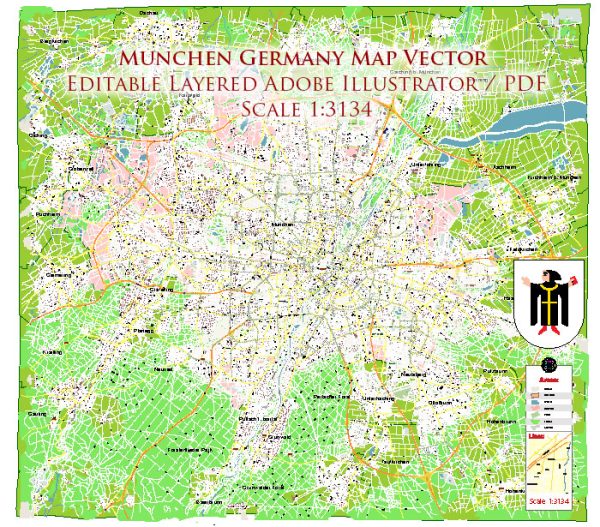
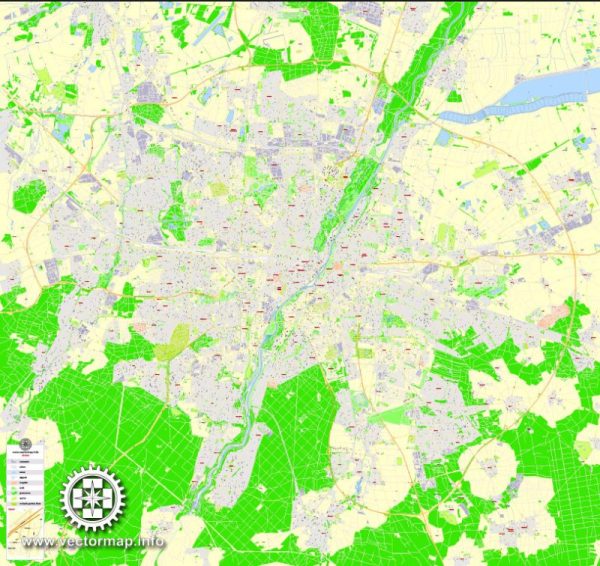
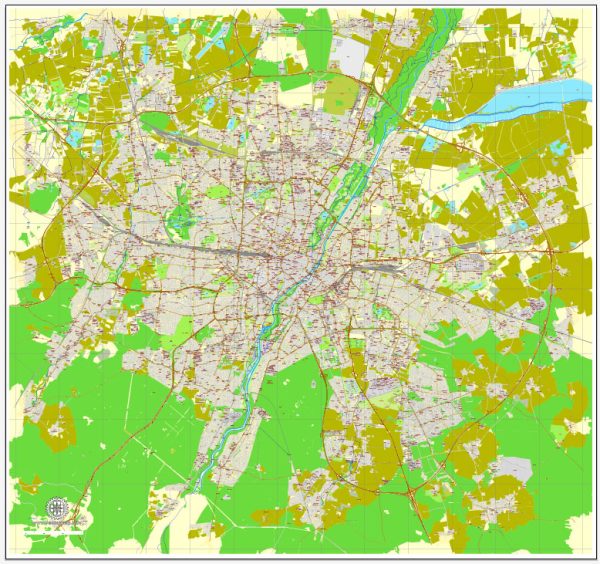
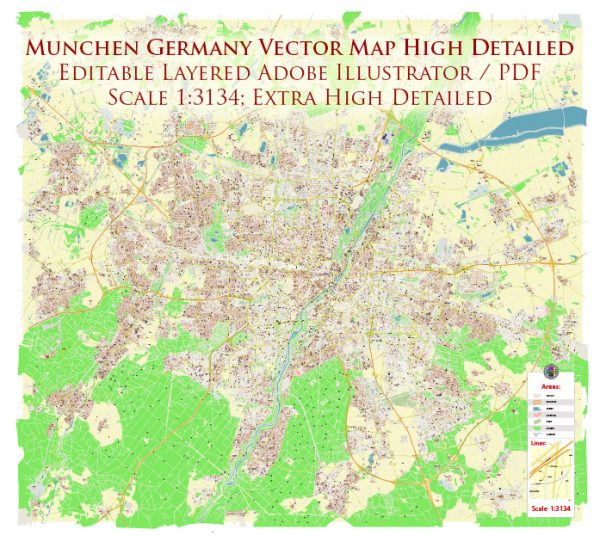
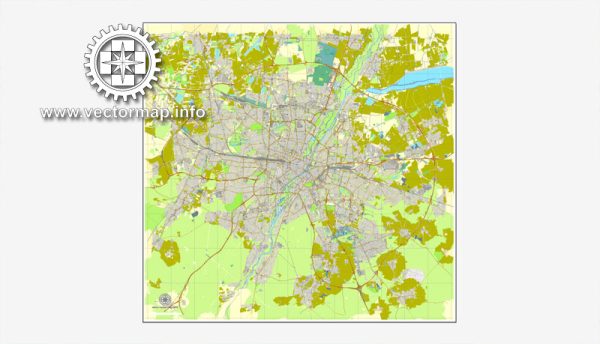
 Author: Kirill Shrayber, Ph.D.
Author: Kirill Shrayber, Ph.D.